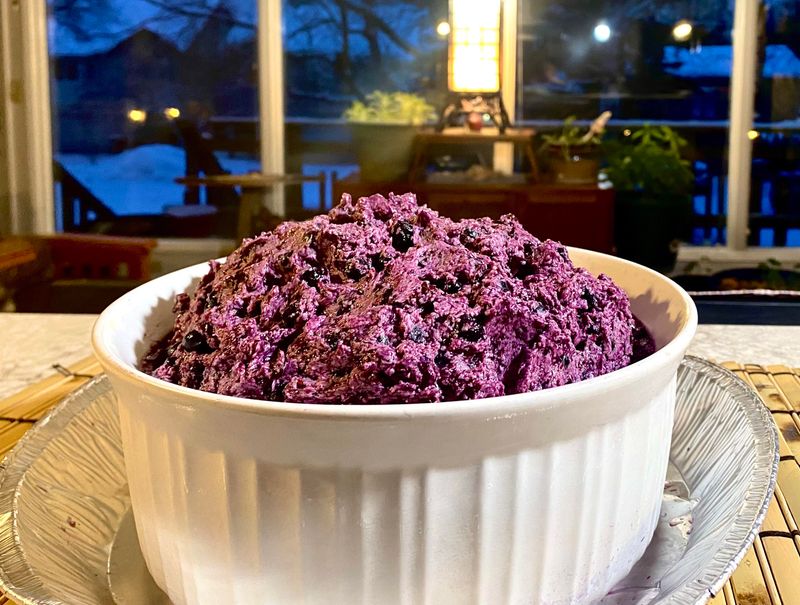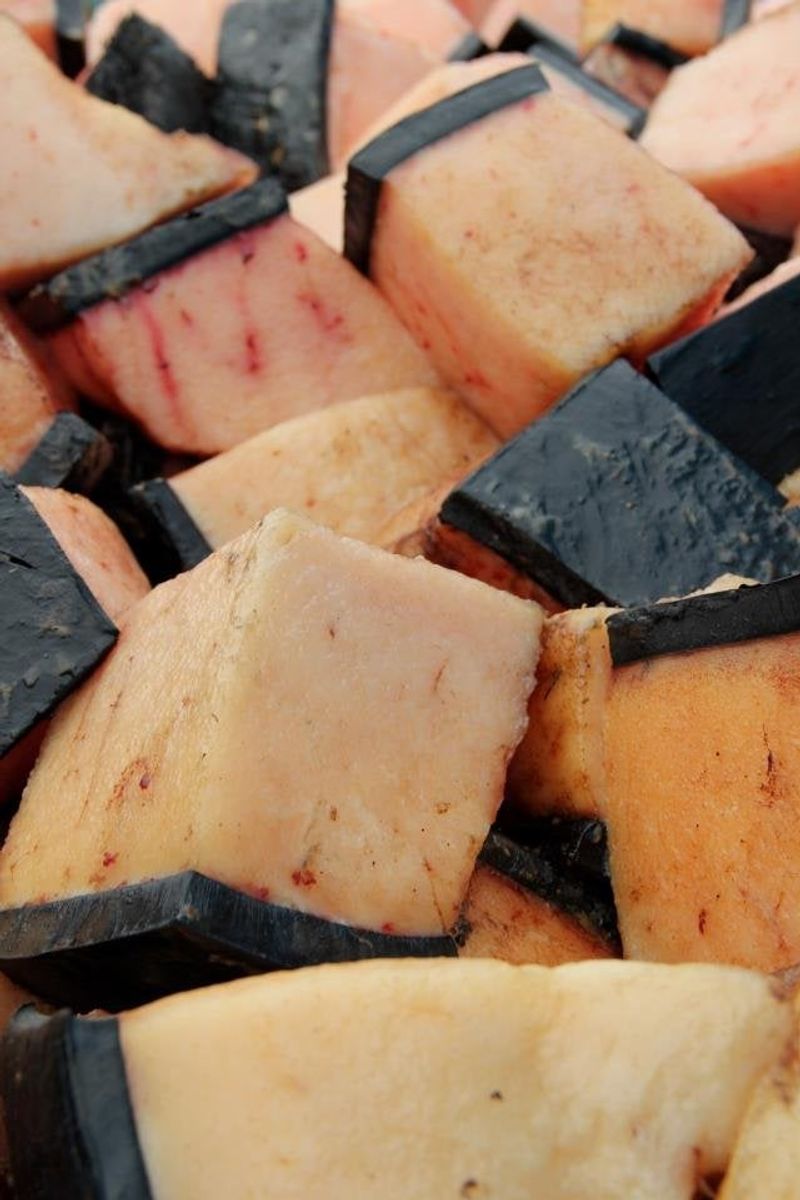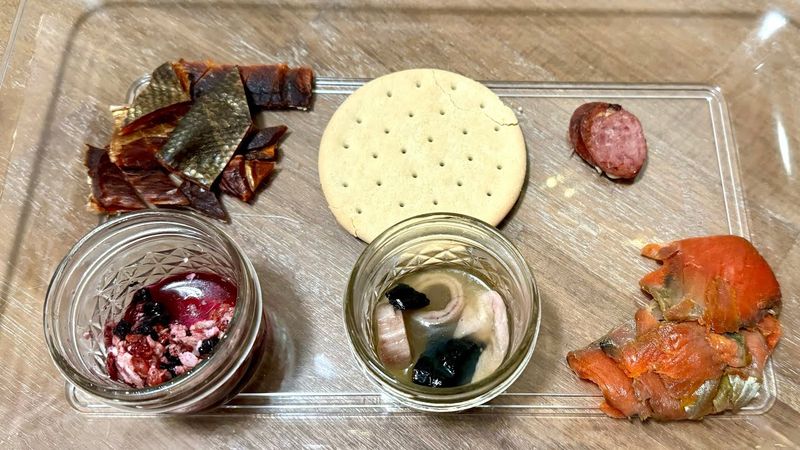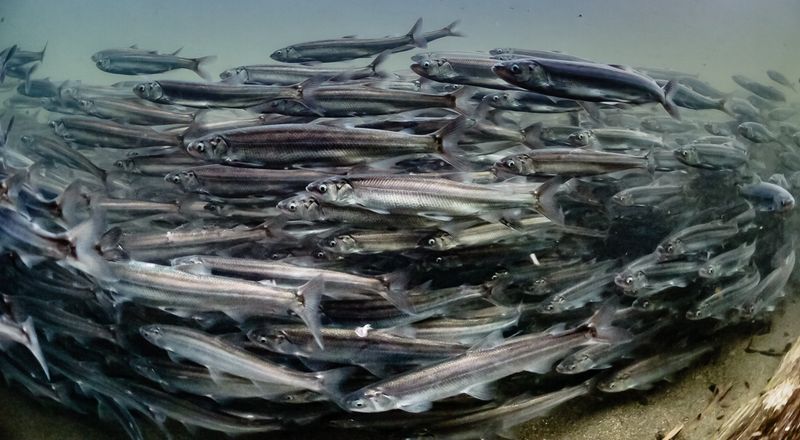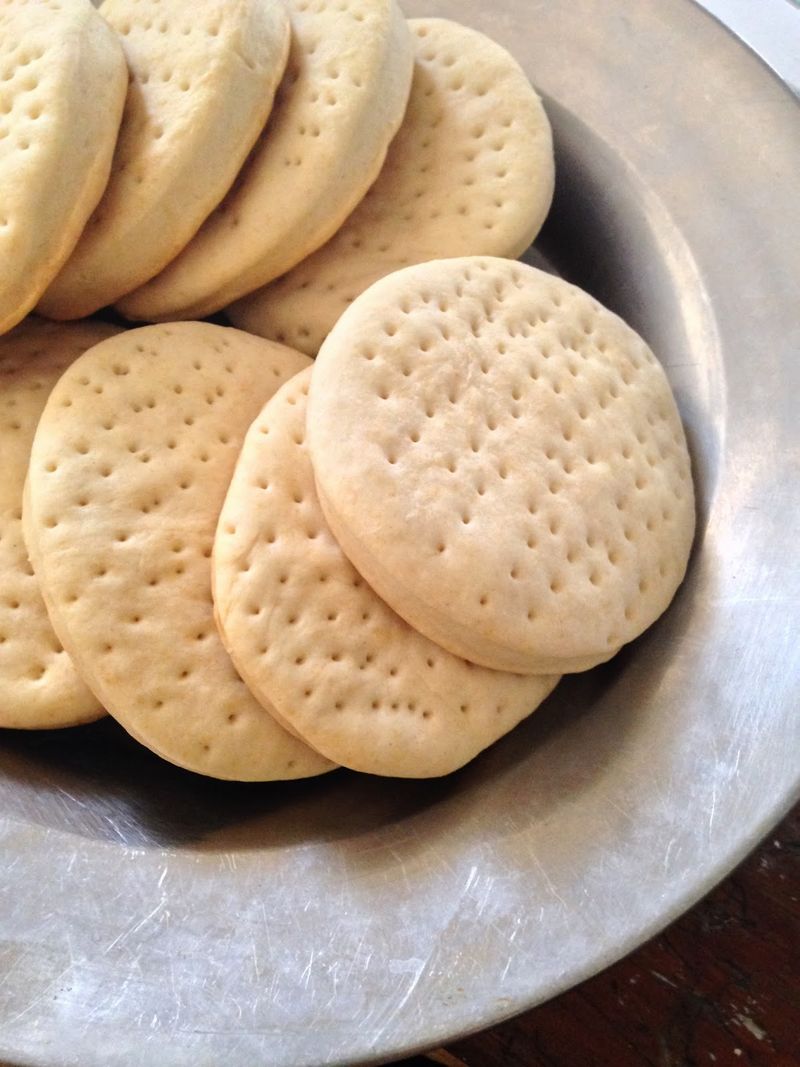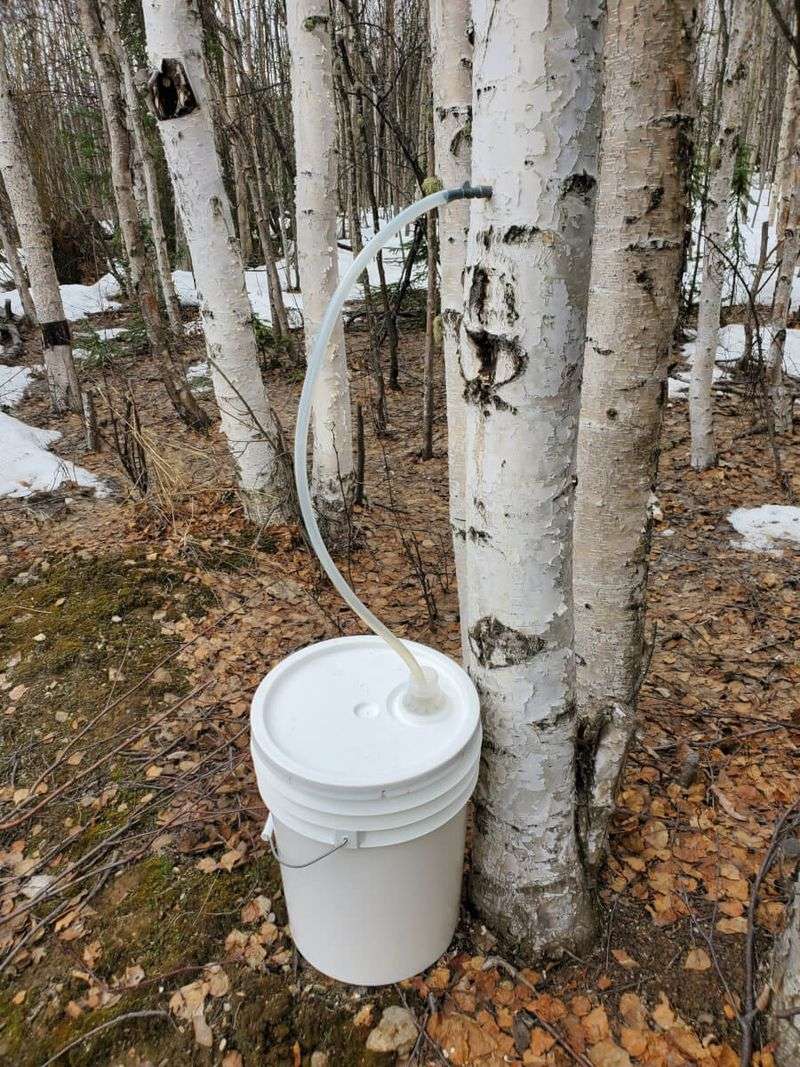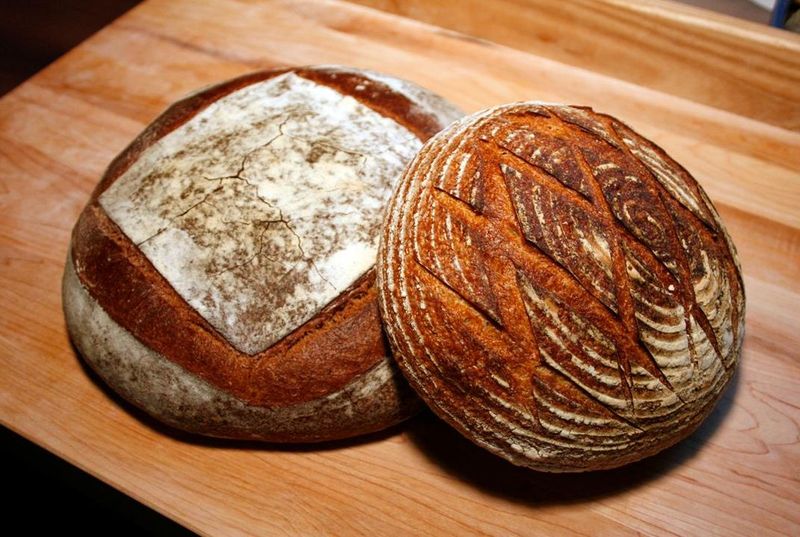Alaska’s unique food culture reflects its diverse Indigenous heritage, harsh climate, and resourceful spirit. Beyond the famous salmon and king crab that tourists seek out, there’s a whole world of traditional foods that truly represent the Last Frontier. From native delicacies passed down through generations to practical staples that emerged from necessity, these eight foods tell the authentic story of Alaska’s people and their relationship with the land.
1. Akutaq (“Eskimo ice cream”)
When winter grips Alaska in its icy embrace, locals reach for a dessert that predates European contact by centuries. Traditional akutaq blends animal fat with wild berries and sometimes fish or game meat into an energy-packed, whipped treat that bears little resemblance to dairy ice cream.
Modern versions often substitute Crisco for seal oil, making this Indigenous delicacy more accessible to urban Alaskans. The Yup’ik name literally translates to “mix together” – an apt description of this cultural cornerstone.
Families guard cherished recipes, passing down precise berry combinations and techniques through generations, creating a food that’s simultaneously a dessert, a cultural touchstone, and a celebration of Alaska’s abundant wild harvests.
2. Muktuk (whale skin & blubber)
Sliced into small cubes that reveal distinct layers of blackish skin and pearly white blubber, muktuk remains a cornerstone of coastal Alaska’s Indigenous food traditions. Harvested primarily from bowhead, beluga, or narwhal whales during subsistence hunts, this nutritional powerhouse delivers essential vitamins and omega-3 fatty acids vital for Arctic survival.
Most commonly eaten raw, frozen, or pickled in vinegar, muktuk’s texture ranges from rubber-band chewy (skin) to creamy rich (blubber). Outsiders often struggle with its distinctive marine flavor and unique mouthfeel.
Beyond nutrition, muktuk represents cultural continuity, connecting modern Alaska Natives to ancestral traditions through carefully regulated subsistence practices that honor the whale’s sacrifice.
3. Seal oil (the go-to condiment in Western Alaska)
Golden-amber and distinctively aromatic, seal oil transforms ordinary foods into cultural treasures across coastal Alaska. Rendered from blubber through traditional techniques, this liquid gold serves as both dipping sauce and preservative – the original Alaska condiment long before hot sauce arrived.
Hunters prize certain seals for their oil quality, with seasonal variations affecting flavor profiles that connoisseurs can distinguish. Strips of dried fish or meat plunged into seal oil create a satisfying bite packed with calories and nutrients essential for northern survival.
Though regulations limit commercial distribution, families still maintain seal oil lamps and storage containers, carefully monitoring fermentation processes passed down through generations. For many Alaska Natives, its distinctive flavor immediately triggers feelings of home and cultural belonging.
4. Hooligan (eulachon/candlefish) & “grease”
Spring’s arrival in Alaska announces itself not just with melting snow but with the frenzied hooligan harvest along certain riverbanks. These small, silvery fish earn their “candlefish” nickname honestly – when dried, they’re so oil-rich they can literally burn like candles when lit.
Families gather with nets and buckets during the brief annual runs, knowing these finger-length fish pack more nutritional punch than their size suggests. The rendered oil – often called “grease” – becomes a prized condiment that enhances everything from dried berries to stews.
Though commercial markets largely ignore hooligan, Alaska’s coastal communities mark their calendars around these runs. The distinctive aroma of processing hooligan signals the seasonal transition as powerfully as any calendar, connecting modern Alaskans to ancient harvesting rhythms.
5. Sailor Boy Pilot Bread
Virtually unknown in the Lower 48, these dense, bland crackers have achieved cult status across Alaska, especially in remote communities where fresh bread is a luxury. Their incredible shelf-life – measured in years rather than days – makes pilot bread the ultimate Alaskan pantry staple.
Rural stores stock these round hardtack crackers by the case, while urban Alaskans might keep a sleeve tucked away for emergencies or nostalgia. The crackers serve as edible plates for traditional toppings: salmon spread, seal oil with dried meat, or the kid-favorite combination of peanut butter and sugar.
When Interbake Foods once threatened to discontinue the product, panic spread through bush Alaska, revealing how deeply this humble cracker has embedded itself in the state’s food identity. For many, pilot bread tastes like Alaska itself.
6. Reindeer sausage (a true Anchorage street classic)
Sizzling on metal griddles throughout downtown Anchorage, the distinctive aroma of reindeer sausage guides hungry locals and curious tourists alike to street carts on nearly every corner. These savory links blend reindeer meat with pork and beef, creating a flavor profile that’s simultaneously familiar yet distinctively Alaskan.
Street vendors serve them split and grilled, often topped with caramelized onions cooked in Coca-Cola – a signature touch that balances the meat’s gaminess. Though technically made from caribou (wild reindeer were introduced to Alaska in the 1890s as livestock), the name has stuck firmly in local vocabulary.
Beyond street food, you’ll find reindeer sausage appearing in upscale brunch menus, pizza toppings, and breakfast scrambles statewide. Many Alaskans keep a package in their freezer for weekend breakfasts that taste like home.
7. Birch syrup
While the rest of North America pours maple syrup on pancakes, Alaskans reach for something more complex and challenging to produce. Birch syrup’s robust flavor – reminiscent of molasses with hints of fruit and spice – comes from sap harvested during the brief window when Alaska’s birch forests awaken from winter dormancy.
The labor-intensive process requires roughly 100 gallons of sap to yield just one gallon of syrup, explaining both its scarcity and premium price tag. Small-scale producers monitor weather patterns obsessively, knowing the perfect harvesting conditions might last mere days.
Culinary pioneers throughout Alaska incorporate this woodland treasure into marinades for wild game, glazes for salmon, and distinctive cocktails that showcase its unique terroir. For those in the know, birch syrup represents Alaska’s landscape distilled into liquid form.
8. Sourdough everything (and the “sourdough” identity)
More than just bread, sourdough represents Alaska’s pioneering spirit and self-reliance. Gold Rush prospectors carried sourdough starters beneath their clothes to keep cultures alive in sub-zero temperatures, earning themselves the nickname “sourdoughs” – a term that still describes long-time Alaskans today.
The tangy flavor profiles vary widely between communities, with some families maintaining starters that trace back generations. Beyond traditional bread, Alaska’s sourdough appears in pancakes (a breakfast staple), biscuits, pizza crusts, and even chocolate cake variations.
Many cabins keep their sourdough crock near the woodstove, feeding it regularly like a family pet. When Alaskans relocate Outside (local slang for leaving Alaska), they often take their starter with them – a living piece of the Last Frontier that continues to nourish connections to their northern home.

